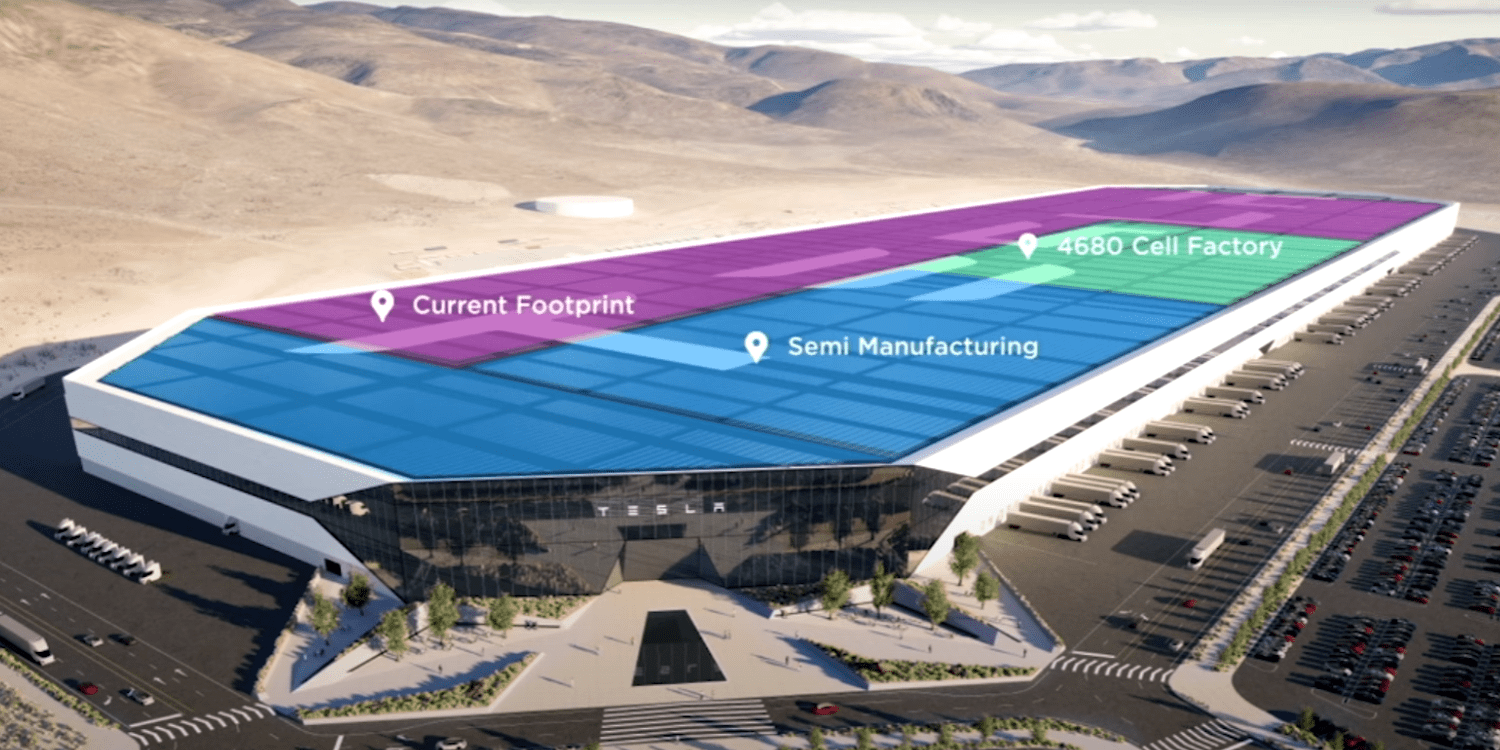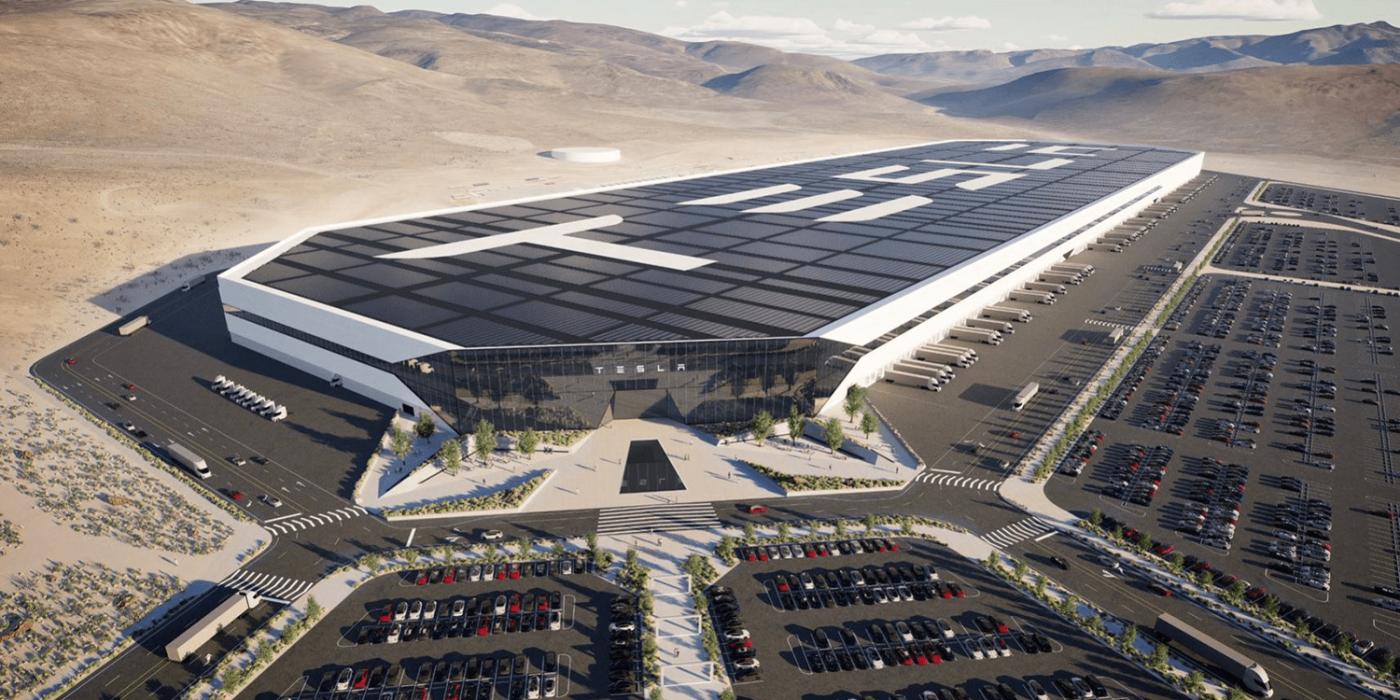Tesla to build 4680 assembly & truck plant in Nevada
Tesla has announced a massive expansion of its site in the US state of Nevada with two new production facilities: one for 4680-format battery cells with a capacity of 100 gigawatt-hours per year and another for the series production of the Tesla ‘Semi’ electric truck.
Tesla plans to invest more than 3.6 billion US dollars and to hire 3,000 new employees, according to the company itself. Further information on the schedule, for example, has not yet been given. While a production capacity is mentioned for the 4680 battery production, Tesla does not give any details for the ‘Semi’ production. According to Tesla, 7.3 billion battery cells, 1.5 million battery packs and 3.6 million drive units have been produced in Giga Nevada so far.
Exactly how the two new production facilities in Reno will be arranged is not yet clear from the Tesla announcement. In the meantime, however, Tesla has published a video addressing this question. According to the video, both production facilities will be directly attached to the existing building, so, essentially, one large building will be created. So far, the Giga Nevada has only reached its full width in the southern area; the majority of the current facilities are located in an elongated wing. With the semi-fabrication and the 4680 plant, Giga Nevada will be extended to its full width over its entire length. Then the building will also have those bevelled corners that were already shown in the first renderings years ago.

With the announcement of the expansion in Nevada, it is also clear that Tesla will not relocate the mass production of the ‘Semi’ electric truck to its factory in Texas, as previously assumed. Tesla had handed over the first examples of the Semi to customers at the beginning of December 2022. These are currently manufactured in very small numbers on a small production line in a hall in the same industrial estate as the Giga Nevada.
In the autumn of 2022, Elon Musk announced his intention to increase the production of the Tesla ‘Semi’ to 50,000 units in 2024. An ambitious goal, but probably not impossible in view of the rapid construction of the last Tesla factories in China and Germany. Especially since Tesla is expanding its existing factory in Nevada for the series production of the Semi.
This apparently also applies to the mass production of the 4680 battery cells. In future, 100 GWh per year are to be produced in Nevada. According to Tesla, that is enough for 1.5 million electric cars annually. Here, however, the timetable for reaching this goal is still completely open. At the end of December 2022, Tesla says it achieved a production rate of 868,000 4680-format cells within one week – enough for around 1,000 electric cars.
If the semi-manufacturing does not move to Giga Texas, there will of course be unspecified space available there that was intended for the truck production lines. Tesla has not yet indicated how this space will be used – but the expansion work in Texas applied for in January is likely to be related to the new plant layout. In addition to an expansion of Model Y production in Austin, additional space would also be available for the Cybertruck and possibly the Roadster 2, both of which were previously reported to be built in Texas – although work on the Roadster 2 has been put on hold, according to a recent statement by Tesla designer Franz von Holzhausen.
Both a version of the Model Y built in Texas and the Semi, Cybertruck and Roadster 2 are expected to use the 4680 cells. These are significantly larger round cells than before – with a diameter of 46 millimetres and a height of 80 millimetres. Tesla’s 4680 cells not only have a different format than the previous 18650 or 2170 cells, but there are also some innovations in the structure of the cell. This should also make them cheaper to produce. Tesla is currently producing 4680 cells at its pilot plant in Fremont and, to an as yet unknown extent, also at Giga Texas. Nevada would thus be the third Tesla-owned 4680 production facility. Nevertheless, the battery cells will continue to be purchased from battery partners, such as long-term partner Panasonic.





1 Comment